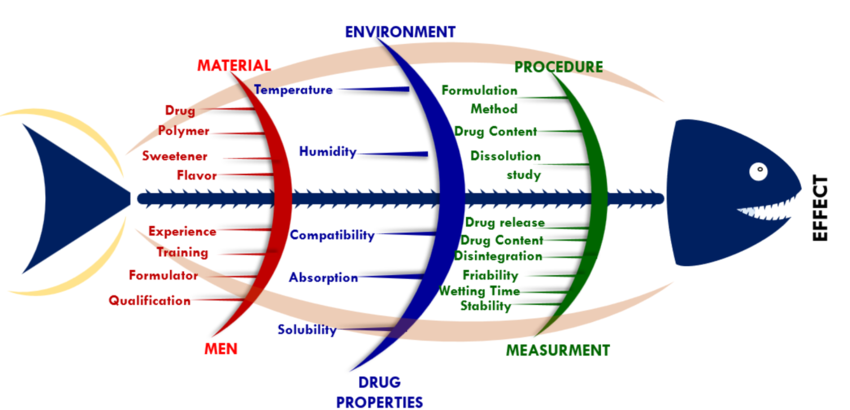Lessons from Colony Collapse Disorder(CCD)
In 1996, French honey bee farms faced a mysterious crisis known as Colony Collapse Disorder (CCD), where large numbers of bees vanished, leaving hives empty and honey production severely impacted. Initial investigations pointed to a pesticide called Gaucho, but even after its removal, the problem persisted and soon became a global concern. Experts have since discovered that CCD is caused by a combination of factors, such as pesticides, poor nutrition, genetics, and environmental changes. The lesson from CCD is clear: complex problems cannot be solved by focusing on a single cause, and quick conclusions often miss the bigger picture. I first learned about this story from the beloved Motamem school several years ago. The lesson concluded with the following message:
"Colony Collapse Disorder (CCD) has become a symbol of multi-causal thinking, reminding us that humans, if careless, may be tempted to simplify the analysis of complex problems by limiting it to the most readily available information."

Narrow perspectives on complex problems often lead to failure.
Just like data-driven decisions in modern businesses, the causes behind Colony Collapse Disorder (CCD) were initially oversimplified, leading to ineffective solutions. This story serves as a warning: narrow perspectives on complex problems often lead to failure. To succeed, a holistic approach that considers all contributing factors, must be adopted.
The Problem of Biased Datasets
In most cases, datasets are crucial for guiding product development, marketing, and customer retention. However, just as environmental factors influence CCD, data analysis can suffer from hidden biases when companies focus too narrowly on a single dataset or compound of sparse datasets. For instance, in business, relying solely on Customer Relationship Management (CRM) reports can provide valuable but incomplete insights, often overlooking critical factors like human resources issues, inter-departmental communication, market trends, competitor strategies, and external influences. To make well-rounded decisions, I’ve found that companies must utilize the full spectrum of available data, avoiding the pitfalls of one-sided datasets that only address a portion of complex problems.
Here are three approaches which support us in avoiding the CCD trap:
1. The Farm-to-Fork Approach
The farm-to-fork concept highlights the importance of considering the entire process of product development, from creation to consumption. This principle applies not only to food production but also to business decisions, addressing the whole process that results in raw materials, production, and distribution. Companies should analyze the complete lifecycle of their products and their interactions with customers, including raw materials, design, manufacturing, distribution, marketing, and customer satisfaction. The farm-to-fork analogy emphasizes that decisions should not be made in isolation, as changes in one area can have unpredictable effects on others. Similarly, for data-driven decision making, a comprehensive understanding of all influencing factors is essential for effective decision-making, as well as observation, measurements, and data collection.
2. Upgrading the Fishbone Diagram
The Fishbone Diagram, or Ishikawa Diagram, is a valuable tool for considering all potential factors before making decisions. To maximize its effectiveness, it’s important to involve all relevant technologists, designers, and stakeholders in the brainstorming process, ensuring diverse perspectives are taken into account. This holistic approach helps companies address root causes of problems rather than merely treating symptoms, thereby increasing the likelihood of successful outcomes. As Rumi wisely states:
"A fish rots from the head, not from the tail!"
This emphasizes the importance of identifying foundational issues at their source. In the Fishbone Diagram, the effect is placed on the head, and the causes are classified as the bones of the fish. Below is an example of a Fishbone diagram for tracking an issue.

A sample Fishbone diagram for a pharmaceutical issue.
One effective method is to distribute writing stickers among participants and ask them to write their ideas anonymously. This approach encourages open discussion without fear of judgment, often leading to the best solutions—even if the ideas initially seem unrelated. In my experience, this method is particularly appreciated by introverted individuals, as it empowers those who might otherwise remain in the background to actively contribute to intelligence gathering. Sometimes, the most innovative solutions stem from ideas that initially seemed outlandish or unconventional.
3. Communication and Data Transparency
Thanks to technological advances, data gathering and analysis have become more transparent and accessible than ever before. Tools such as Artificial Intelligence (AI) and Machine Learning have revolutionized how businesses collect and interpret data. However, while these tools offer enormous potential, they also highlight the risks of bias and over-reliance on narrow datasets. Issues like overfitting and underfitting in machine learning models emphasize the need for comprehensive, well-rounded data collection.
To ensure that data-driven decisions are effective, it is essential to prioritize communication and collaboration across industries. One of the key lessons I’ve learned is the importance of "walking and asking". Effective communication starts by engaging with people directly involved in the industry—listening to their experiences and challenges. Asking open-ended questions like "What are the top three issues from your side of view?" can uncover valuable insights hidden beneath the surface. This approach, alongside providing a platform for gathering their points of view, ensures that datasets reflect real-world problems rather than assumptions or incomplete information.
Your Feedback Matters